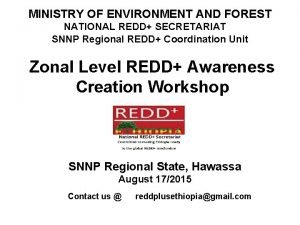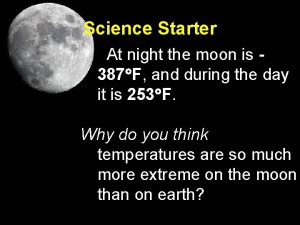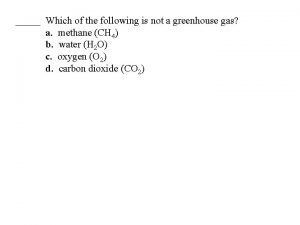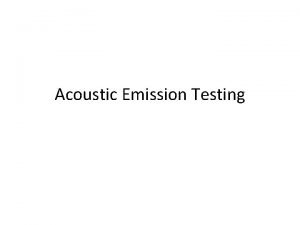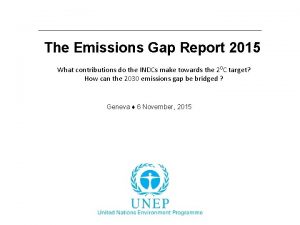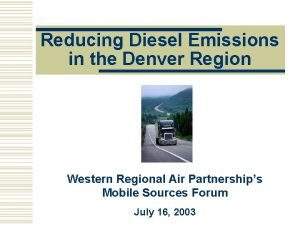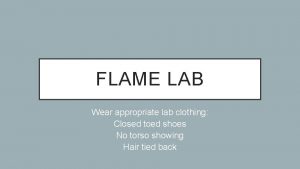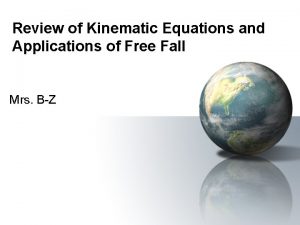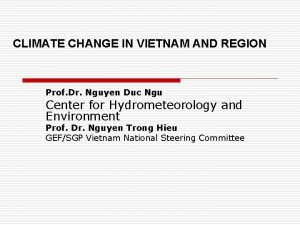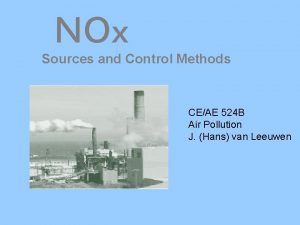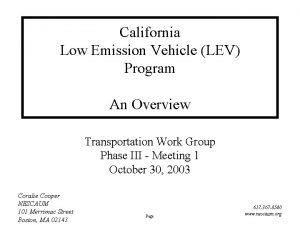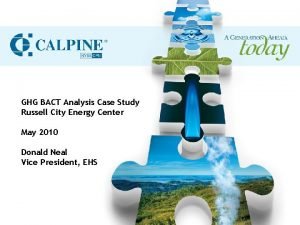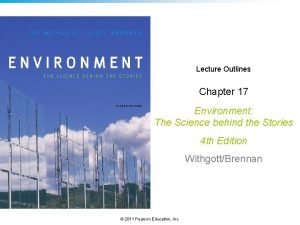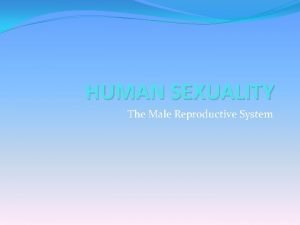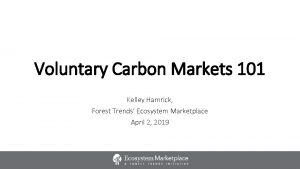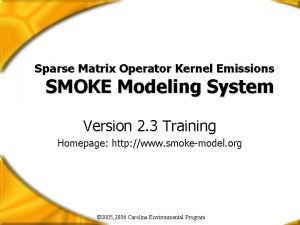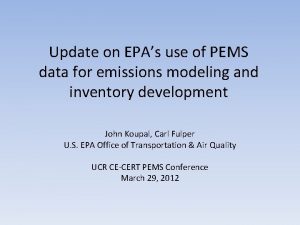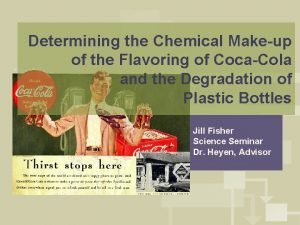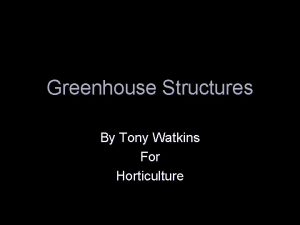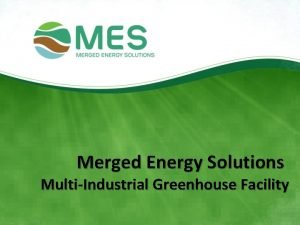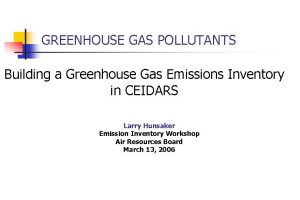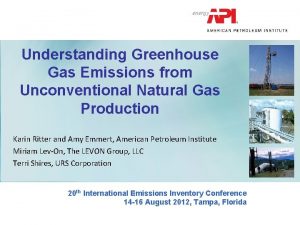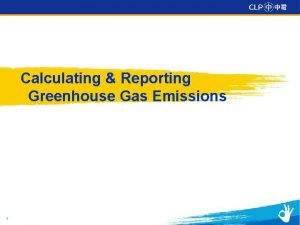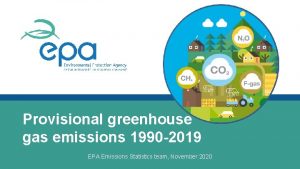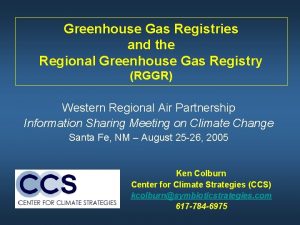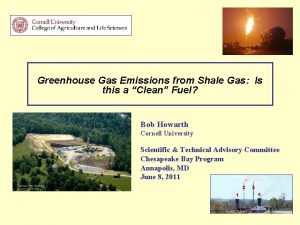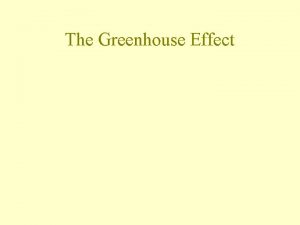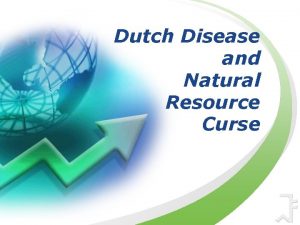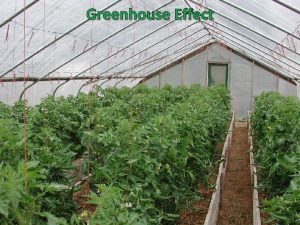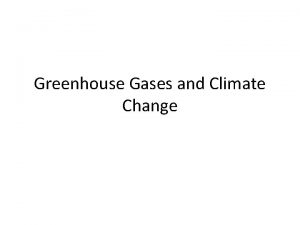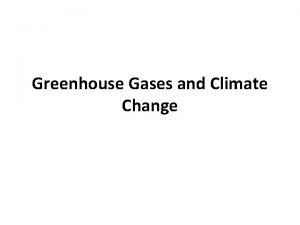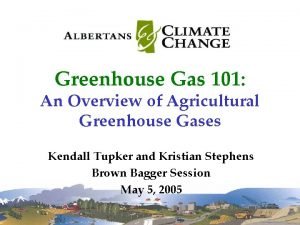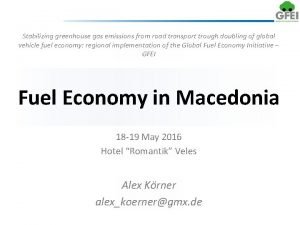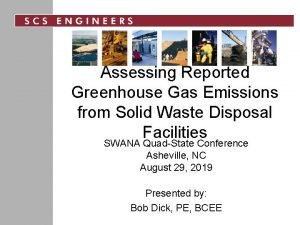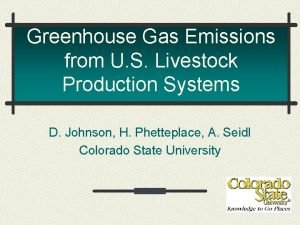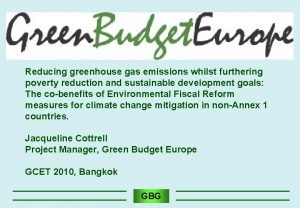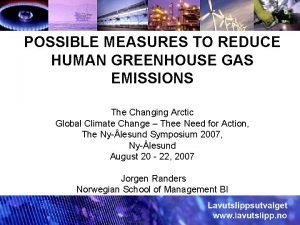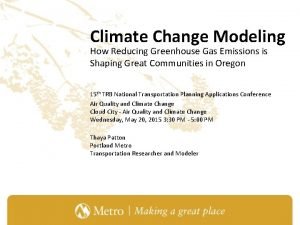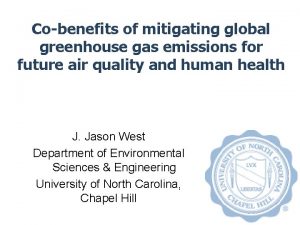Greenhouse Gas Emissions of the Dutch Natural Gas






























- Slides: 30

Greenhouse Gas Emissions of the Dutch Natural Gas Industry Doreen Wunderlich

1 2 Motivation Emissions from the Dutch Industry 3 Methane and CO 2 equivalent emissions 4 Conclusions

Motivation

• Natural gas burns“cleaner”than coal -> bridge fuel • life-cycle assessment: all greenhouse gases across fuel´s supply chain • CH 4 emissions can offset benefits of lower combustion emissions -> methane loss rate: CH 4 emissions in % of extracted CH 4 Hayhoe et al. (2002), 2002 Wigley (2011): 2. 0% Mommers (2016): 3 -8%

• TNO, 1995: Methane emissions due to oil and natural gas operations in The Netherlands • CH 4 emissions for the supply chain exploration production procecssing transmission storage distribution end use • comparison of bottom-up and top-down approach

• Imperial College London, 2015: • indication of emission estimates found in 240 papers • GHG emissions in g. CO 2 eq/MJ • Methane loss rate

• Imperial College London, 2015: Key findings: • vast range of GHG emissions across the supply chain • incomplete and under-represented data • no data about the Netherlands

Emissions from the Dutch Industry

Structure in the Netherlands KIWA: Keurings Instituut voor Waterleiding Artikelen NAM: Nederlandse Aardolie Matschapij EBN: Energie Beheer Nederland NOGEPA: Netherlands Oil and Gas Exploration and Production Association

Exploration/Production/Processing: e-MJV

Exploration/Production/Processing:

Exploration/Production/Processing:

Exploration/Production/Processing:

Transmission and Storage: 2013 CO 2 emissions: 2014 2015 2016

Distribution: CH 4 emissions: CO 2 emissions: from NIR reports: 0. 18 ktonne in 2013 -2015

Methane and CO 2 -equivalent emissions

Carbon footprint GHG emissions across the entire supply chain J M q/ 2. 0 e 2 O C g J /M eq O 2 C 4 g 1. = 86 = 34

Carbon footprint Comparison to Balcombe et al. 42 g. CO 2 eq/MJ (HHV) 1. 4 g. CO 2 eq/MJ 2 g. CO 2 eq/MJ (HHV)

Carbon footprint

Methane only emissions TNO, 1995: 148 (98) ktonne > 70% reduction

Methane loss rate 10 % Hayhoe et al. Balcombe et al. 0. 2 %

Conclusions

Key emission sources: • key segments across supply chain: production and processing • CO 2 from energy generation • CH 4 from venting and fugitive emissions Comparison with TNO-study, 1995: • > 70% reduction in absolute amount of CH 4 emissions • > 2/3 reduction of methane loss rate HOW ? - mitigation measures - country-specific emission factors Comparison with literature (Balcombe et al. ): • methane loss rate lower than any indication from literature REA • CO -equivalent / MJ lower than any indication from literature SO NS ? 2

Explanation of the “good”results: • abandonment of unconventional gas fields • strict regulations, dense population -> requires low-emitting technology • reporting system -> country-specific emission factors -> intensive measurements (Gasunie)

BUT. . . • emission sources reported by production companies partly unclear

BUT. . . • emission sources reported by production companies partly unclear • exact emission sources

BUT. . . • emission sources reported by production companies partly unclear • which emission sources • neglecting insignificant sources by DSO (and other companies ? )

BUT. . . • emission sources reported by production companies partly unclear • which emission sources • neglecting insignificant sources by DSO (and other companies ? ) • low transparency of emissions reported in NIR

BUT. . . • emission sources reported by production companies partly unclear • which emission sources • neglecting insignificant sources by DSO (and other companies ? ) • low transparency of emissions reported in NIR • partly incorrect in reporting tools intransparent - incomplete - incorrect reliability ?

What is needed: completeness transparency independent auditing
 Gmail.com
Gmail.com Difference between natural and artificial greenhouse
Difference between natural and artificial greenhouse Which of the following is not a greenhouse gas?
Which of the following is not a greenhouse gas? Application of acoustic emission testing
Application of acoustic emission testing Un emissions gap report
Un emissions gap report Diesel emissions denver
Diesel emissions denver Where else have you observed colorful light emissions
Where else have you observed colorful light emissions Otto emissions is driving his car at 25.0 m s
Otto emissions is driving his car at 25.0 m s Ghs emissions
Ghs emissions Sources of nox emissions
Sources of nox emissions California lev
California lev Volkswagen ethical dilemma
Volkswagen ethical dilemma Using citys heat reduce emissions
Using citys heat reduce emissions Splonc
Splonc Parts of sperm cell
Parts of sperm cell Un emissions gap report
Un emissions gap report Sparse matrix operator kernel emissions
Sparse matrix operator kernel emissions Pems emissions modeling
Pems emissions modeling Natural income
Natural income Natural hazards vs natural disasters
Natural hazards vs natural disasters Citric acid formula
Citric acid formula Even span greenhouse
Even span greenhouse Greenhouse effect
Greenhouse effect Ledgewood farm
Ledgewood farm Greenhouse effect long and shortwave radiation
Greenhouse effect long and shortwave radiation Greenhouse effect on plants
Greenhouse effect on plants Taats technical services llc
Taats technical services llc Greenhouse effect
Greenhouse effect Biomass fuel definition ap human geography
Biomass fuel definition ap human geography Rinard orchid greenhouse
Rinard orchid greenhouse Ridge and furrow greenhouse
Ridge and furrow greenhouse
